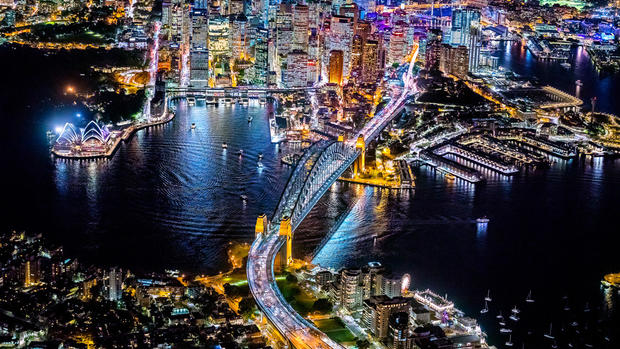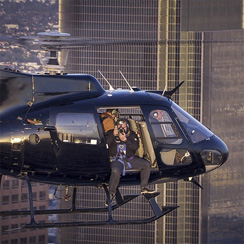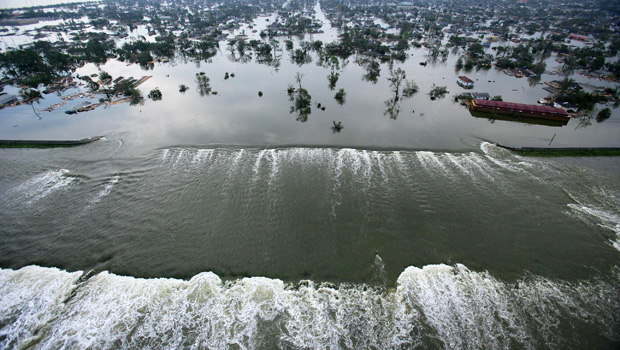Reaching new heights in aerial photography
One photographer is reaching new heights every time he reaches for his camera. With Lee Cowan, we'll watch him at work:
"This is something you've never seen before."
At first glance his images look like circuit boards -- nerve centers surging with energy.
But while these are hubs of activity, they're not the kind in our computers. These are the world's great cities, photographed the way the heavens see them, sparkling spectacles below.
Photographer Vincent Laforet takes in the view from above, comparing the avenues to arteries -- the blood flow of the city. "You literally perceive the depth, and the three dimensionality of the Earth in a different way, and you see distances in a different manner," he said. "They look much smaller, much more within reach."
Laforet has taken aerial photography to new heights. His images have transformed the spaghetti bowls of L.A.'s freeways, the glittering Strip of Sin City, and made London's Big Ben look more like a big jewel.
"It was almost an out-of-body experience, because it's just beautiful from up there," he said.
They're just a few of his god-like glimpses that he's publishing in a new book, fittingly called "Air."
"Since I was 13 years old, like everyone else I look out the windows of a commercial aircraft, and I'm fascinated by it," he said. "I see every little intersection, the police cars, the stadiums, and you wonder what's going on down there. You see this incredible diorama of activity."
Laforet spends a lot of time in helicopters, but not the way you might expect. He doesn't just hover a few hundred feet above, like most choppers. Vince asks his pilots to take him up 9,000, 10,000, 11,000 feet and higher -- altitudes helicopters rarely fly.
"Some veteran helicopter pilots actually refuse to go up there, they're just not comfortable," Laforet said. "The first time I went up, it was scary, because I've never been that high [with] an open window or door, in a harness leaning out. And you see planes going right underneath you -- your heart skips a beat."
So when he asked Cowan to join him on his recent flight over the city of Miami, well, how could he resist?
Cowan asked, "Are you going through the shots in your head?"
"No. I'm completely relaxed right now. Yeah, it's the moment I take off and I see the first image, that's when the wheels start turning."
We took off just before sunset, and headed East toward Miami Beach, with a brief stop hovering over a couple in a pool. "I'm looking down there and I'm trying to make order out of chaos, looking for patterns, geometry, color, and light," he said.
Laforet leaned out, and let it all unfold below him.
Cowan asked, "What's it like when you're literally hanging out over the edge of the chopper?"
"You forget about it after a while -- you're so focused on getting that image."
"Do you ever think about the fall?"
"The only time I ever thought about it was at high altitude over New York," he said. That was when a physicist explained a fall from that high up could last a terrifying 41 seconds. "I was like, 'Thanks for telling me. Now I know' -- that's way too long!"
Once it got dark, he started going higher.
Helicopters can be like flying blenders; they vibrate wildly, and Laforet has to try to hold the camera steady while shooting at very low shutter speeds, often as the chopper goes into steep, banking turns.
"On the money, coming in -- perfect. Beautiful! Ah, that almost made me sick!"
The hot Florida air got cool and crisp as they climbed even more, until they were at 8,000 feet -- with nothing between them and downtown Miami except air.
"As a photographer, as a visual communicator, you try to find images no one has seen before. That's your goal," he said. "And that's a pretty tall order in 2015 when everybody has a camera on their phone."
Laforet is used to breaking ground, although he's usually ON the ground to do it. Back in 2008 he was one of the first to shoot video on a 35mm digital camera. His mini-movie, called "Reverie," was something few had ever seen -- certainly not from what most considered basically a still camera.
Reverie from Vincent Laforet on Vimeo.
But that's just him. Ever since he was a child something about the visual just clicked.
"When I was 15 I asked my father, who was a photographer, 'Can I borrow your camera?' I picked up this camera, and I took a picture, and I was done. I was like, that's it!"
He was rarely without a camera after that, and he soon became the youngest staff photographer ever hired by The New York Times. "When I was with The New York Times, I would always say, 'I want to find something that either people can't see, or don't want to see.
He once scaled the antenna atop the Empire State Building, about 1,475 feet up -- sans safety harness, mind you -- just to get a shot.
In the days after the attacks of 9/11, Laforet was dispatched to Pakistan, much to his surprise. "I was not a war photographer," he said.
"You didn't want to be on the front line?"
"No. When bullets fly, I hit the ground and I stay down."
But staying down turned out to be his secret -- capturing not so much the war, but the victims of it. "These were real people that had families that were just as afraid as people back in the States," he said.
Laforet shared the Pulitzer Prize for feature photography that year. He was only 27.
"That, and Katrina a few years later, were two stories that really formed me as a journalist," he told Cowan. "When you see what happened in New Orleans to Americans, in our country, that really shakes your foundation up pretty seriously."
So seriously that Laforet needed a change. He quit his job as a photojournalist and decided to pull away from it for a while.
Cowan said, "Now you're doing something where there aren't people, and perhaps emotion, in your pictures anymore. It's literally a view from afar."
"There's something very odd that happens when you go up in the air in that, ironically, it's kind of intimate," Laforet said. "I can't explain it."
He's still telling people's stories, however. There are plenty down there if you look.
Laforet has always pushed the envelope, but for him, it's not about being a daredevil.
It's about finding and capturing what we often lose on the ground: a sense of peace and perspective.
"I think when you take a step back from anything, you see things more clearly," he said. "To take some distance from the street-level view, and not getting lost in all the details that you see on the street level, you see that we're all in this together."
For more info:
- vincentlaforet.com
- "Air" by Vincent Laforet (PSG)
- Follow The Air Project on Twitter (@LaforetAIR), Facebook, Instagram and YouTube




